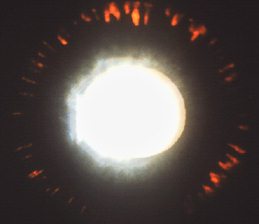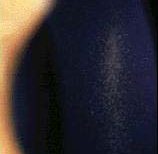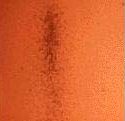Pigment dispersion syndrome
|
|||||
|
The corneal endothelium contains vertically orientated deposition of pigments (Krukenberg's spindle). The pigment may also be seen on the iris and the lens (and also the trabecular meshwork but in the clinical examination you are unlikely to be asked to perform gonioscopy on the patient). Retroillumination shows mid-periphery iris transillumination. In the examination:
of pigment |
Questions:
1. What proportion of patients with pigment dispersion syndrome develop glaucoma?Answer
2. Is it possible for a patient with pigment dispersion syndrome to develop glaucomatous disc changes despite a normal intraocular pressure and if so why?


